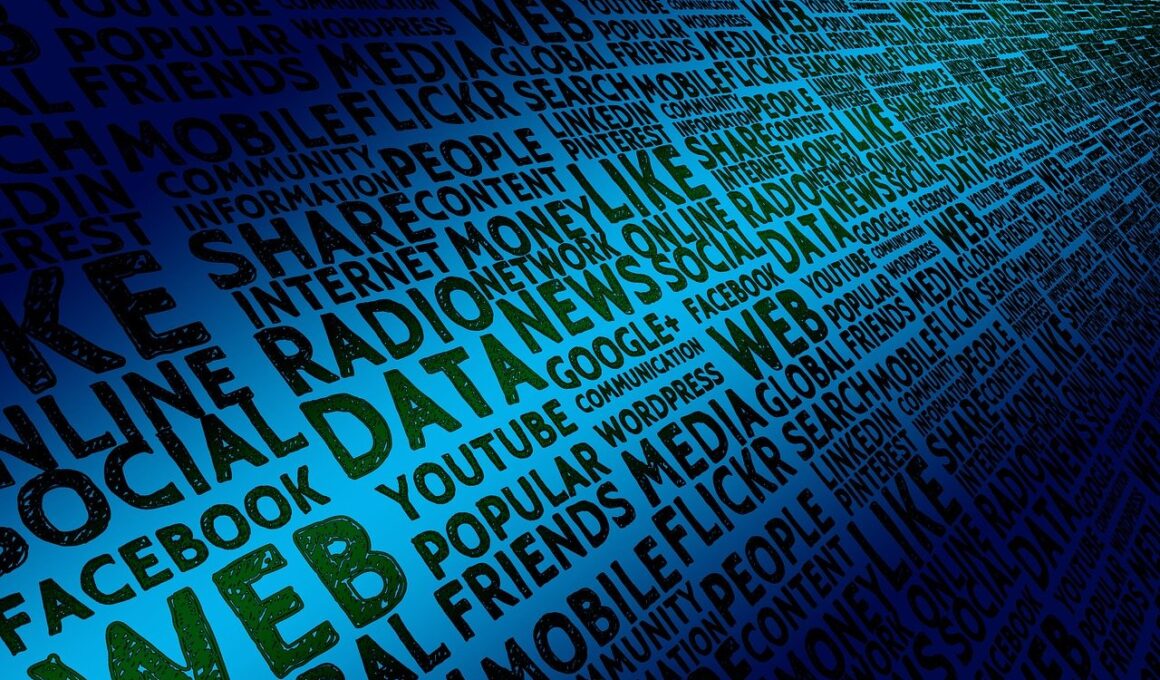Consumer Behavior Analysis During Crises with Social Media Data
In today’s world, crises can emerge suddenly, impacting consumer behavior significantly. Social media has become a vital tool for real-time analysis of consumer sentiments during these periods. Monitoring user interactions on platforms such as Twitter, Facebook, and Instagram helps companies gauge public perception. Understanding how a crisis unfolds and influences consumer behavior enables businesses to respond effectively. The key focus remains on gathering real-time data to uncover insights. By considering consumer feedback, organizations can adjust their strategies accordingly. Data analytics tools collect and analyze data, providing clearer visibility into consumer trends and preferences. As public sentiment rapidly changes during crises, brands benefit from tracking these fluctuations closely. Analyzing social media data presents challenges due to vast quantities of unstructured content. However, applying sentiment analysis helps identify trends in consumer emotions. By translating social opinions into actionable insights, brands can navigate crises more effectively. Thus, effective consumer behavior analysis not only determines market responses but also aids corporations in maintaining their reputations. Investing in robust social media analytics can thus prevent potential pitfalls.
Crisis Management Analytics harnesses the power of data to mitigate potential fallout. Understanding consumer behavior during a crisis can offer brands significant advantages. By maintaining open channels of communication, organizations can demonstrate empathy toward affected consumers. Crafting tailored messages based on analytical insight can foster stronger connections. Recognizing the key demographics involved in response patterns allows businesses to target messaging more effectively. Analyzing behaviors of different audience segments aids in creating personalized experiences during crises. Brands must understand that transparency is crucial during turbulent times. For instance, a company’s quick response to crises can signal to consumers that they’re taking the situation seriously. Moreover, verbal and non-verbal cues in social media posts reveal shifting sentiments. Diverse platforms serve varied segments of users; hence businesses must monitor each effectively. Employing AI-driven sentiment analysis tools helps streamline this effort, offering detailed overviews in real-time. Realized insights can guide strategic decisions, assisting organizations in navigating uncertainty. Consequently, leveraging social media analytics enables forward-thinking brands to adapt quickly and successfully.
Strategies for Using Social Media Analytics Effectively
To effectively utilize social media analytics during crises, organizations must implement strategic frameworks. Firstly, establishing clear objectives reduces ambiguity. Defining purpose behind analysis ensures targeted analytics processes. Securing real-time data allows companies to respond promptly to shifting sentiments. Collecting data from social channels provides organizations with insights into consumer thoughts and feelings. Furthermore, analyzing interactions guides businesses in refining messaging for determined audiences. Companies can develop approaches that address urgent concerns while displaying accountability. Prioritizing audience engagement creates more meaningful connections in times of distress. Utilizing visual data representations enhances understanding across team members. Dashboard tools simplify tracking critical metrics, offering quick overviews of sentiments and reactions. Additionally, insights gained should translate into actionable strategies for better crisis management. Afterward, assessing performance through established key performance indicators allocates necessary resources effectively. Evaluating the impact of social media engagements contributes to future planning and preparations. Therefore, using robust analytics tools remains essential for organizations seeking to navigate crises responsibly and skillfully.
Moreover, it’s essential that companies continue to advance their analytics capabilities. Keeping pace with digital transformation keeps firms competitive and aware of emerging trends. Investing in training for employees ensures analytical tools are fully utilized. By curating a knowledgeable team, organizations can maximize the value derived from social media data. Additionally, understanding trends over time highlights shifts in consumer priorities and behaviors. This ongoing refinement allows companies to prepare better for unexpected developments in the future. Adapting operations and communication in real-time hinges on data-derived insights. Ultimately, nurturing a culture of continuous improvement helps organizations evolve consistently. Integrating consumer feedback into business practices sets the foundation for long-term success. Successfully managing crises emerges from efficient analysis processes combined with a commitment to consumer interests. Staying attuned to what consumers express online shapes corporate responsiveness. Organizations that understand and analyze consumer behavior during crises display humility and flexibility. Responding adeptly ensures a brand resonates positively with its audience. In turn, this increases loyalty and trust, crucial factors in reinstating brand confidence after a crisis.
The Role of Technology in Consumer Behavior Analysis
Technology serves as a cornerstone in consumer behavior analysis, especially during crises. Advanced algorithms process vast amounts of social media data, identifying patterns that humans could overlook. Machine learning models can discern sentiment conveyed through text, helping brands adapt accordingly. Moreover, these technologies can analyze images and videos, providing deeper insights into public perceptions. Utilizing such comprehensive analysis delivers a holistic view of consumer emotions during crises. Consequently, companies become better equipped to address specific concerns and questions. As social media landscapes evolve, the need for adaptability becomes paramount. Businesses that embrace technological innovations remain ahead of the curve. Furthermore, employing data visualization techniques enhances the clarity of insights. Presenting findings in a user-friendly format aids stakeholders in making informed decisions quickly. This increased agility is especially relevant during a crisis when every second counts. Keeping abreast of technological advancements allows for ongoing enhancements in analytics capabilities. Overall, integrating technology enhances both data analysis and crisis response effectiveness.
Lastly, evaluating analytics outcomes post-crisis is crucial for refining future strategies. Collecting feedback helps identify strengths and weaknesses in deployed approaches. Companies can determine which tactics resonated well and which fell short. Such evaluations are vital for preparation during unpredictable future crises. By analyzing previous efforts, organizations can identify areas for improvement. This effort can heavily influence communications strategies moving forward. A thorough understanding of impacted demographics allows for tailored responses in the next situations. Keeping records of past crises bolsters institutional knowledge about consumer behaviors over time. Therefore, fostering a learning culture within organizations emerges as a vital component of resilience. Implementing learned lessons into planning leads to better preparedness. Engaging with consumers regularly helps maintain a positive relationship, reducing anxiety. Consequently, as brands navigate crises adeptly, they reinforce their image and reputation within the market. Prioritizing strong communication during turmoil fosters trust and loyalty among consumers. Hence, brands that view past analytics outcomes as learning opportunities cultivate ongoing success.
Conclusion: The Power of Social Media Analytics
In conclusion, employing social media analytics for consumer behavior analysis is indispensable during crises. Understanding sentiments allows brands to connect authentically with consumers. Analyzing data empowers organizations to navigate adversity more effectively. Merely gathering information isn’t sufficient; companies must interpret this data meaningfully. Real-time insights guide organizations towards strategies that maintain credibility. Crises necessitate a immediate and transparent response. Engaging consumers through accurate messaging nurtures relationships, preserving brand integrity. Continuous learning from analytics ensures that organizations become adept at responding to future crises. Moreover, monitoring social media channels establishes a foundation for ongoing engagement. This proactive approach allows businesses to stay informed and prepared. Ultimately, effectively utilizing social media analytics cultivates a culture of resilience. In today’s fast-paced digital landscape, brands must embrace this resource for informed decision-making. Organizations that leverage social media data gain footholds in shifting consumer attitudes. As markets evolve, utilizing analytics to understand consumer behavior becomes increasingly crucial. Therefore, adapting analytics methodologies and resources leads to sustainable success and relevant, consumer-centric consultations.
By incorporating strategies mentioned above, businesses can enhance their effectiveness in crisis management. Regularly reviewing performance metrics allows for evaluating the success of their methods and adjusting as necessary. Therefore, organizations that harness the power of social media analytics develop more robust crisis management frameworks and stay relevant to their consumers.


